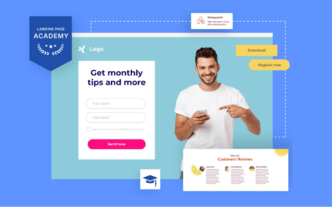Checking and Improving the Page Speed

Landing Page Academy » Chapter 4: Landing Page Optimization » Lesson 3/7
Having a landing page filled with things like videos, pictures, animations, and so on has its consequences: it probably won’t be the fastest-loading landing page ever… and that’s where the problem lies.
Maybe you think that nowadays, people usually have access to a super-fast internet connection. You’re right, but that doesn’t change a thing.
Over the years, websites and landing pages evolved from simple pages (tiny in file size) to powerful yet burdening ones. Our devices need a super-fast internet connection to load pages smoothly. Still, as an owner of a landing page, your job is to keep it as lightweight as possible, so it loads quickly even on low-end devices and weak internet connections.








